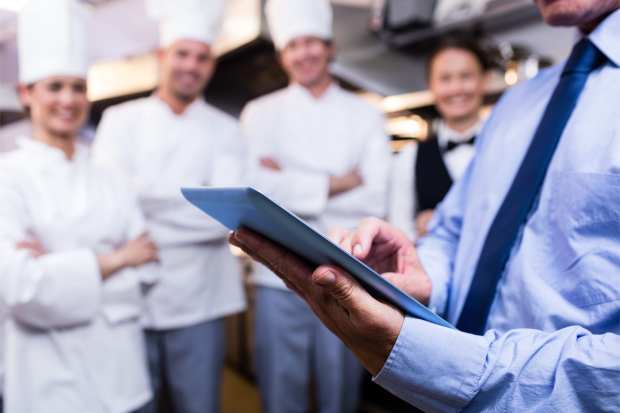The Challenges Of Automating Restaurant AP

It may be the case that the only predictable thing about the restaurant business is … unpredictability.
New menus items may be popular … or not. The Friday hot spot may be hotter than usual, with lines out the door. The fresh fish vendor may have a lousy day’s haul. And of course, there’s the ebb and flow of orders at tables, online, and, in recent years, mobile order ahead.
As is the case with so many verticals, technology can help smooth out the bumps of running a business day to day. But restaurants, in particular, have special challenges in place, according to Tony Hall, CTO of restaurant technology firm Compeat.
Hall’s comments came against the backdrop where, in August, Compeat unveiled Compeat Pay, a platform that helps automate restaurant vendor payments.
Hall said that the restaurant industry is different than other verticals when it comes to software as a service (SaaS) and for back-end operations.
He noted that staff turnover is relatively high and margins are thin.
“You cannot spend months training people on software,” he said, “and you’ve got to be able to slice and dice data in a way that enables restaurant operators to be profitable, and also do it in a way that, where people are turning over at a high rate can quickly ramp” and use technology to make decisions.
Of course that decision-making is rapid fire, as staff must make inventory management decisions, keep in touch with vendors and pay bills with a constant eye on day to day fluctuations in customer demand, from walk-ins to deliveries to mobile order ahead.
Against that backdrop, he said, “data is the new oil.”
The business intelligence that comes from that data is critical, and it needs to be accessed instantly. For restaurants, being able to access that data in a mobile way — whether across tablets or smartphones, in a storeroom or out greeting guests among the tables — is critical as well.
Restaurants, he noted, operate in a non-steady state, and data accessed and interpreted in real time across the cloud can integrate far-flung points of the operation, from the customer-facing side all the way to the kitchen to the back office.
The 360-degree view offered through a restaurant management platform can give a manager insight into whether inventory might (or might not) match projections that foot traffic is going to be 15 percent higher on a certain day
The restaurant in turn can manage inventories and deliveries with greater accuracy, which translates into better margins and even translates to reduced food waste.
“This is all because you saw early indicators,” Hall told PYMNTS, “and those early indicators happened because of data integrations.”
The AP Function
Hall told PYMNTS that making the leap from paper and manual processes to ResTech, including ACH and virtual card payments, speeds payments but also boosts security.
“If you look at AP,” he said, “the notion paying a bill – and writing a check to do it – means you’ve got security risk automatically.”
The checkbook, after all, is floating around the office, in physical form, and data might be entered manually in software programs, reconciled with accounting systems — and the restaurant operator must always be mindful to spot errors through the whole process.
Automating accounts payable (AP) functions, and other functions, he added, can let firms tailor just who has access to certain data (or accounts), adding an additional layer of security as well.
With reference to the Compeat system, Compeat Pay can print and mail checks for its customers tied to existing bank information, integrate with customers’ banks to automate the creation and delivery of ACH file and also issue pre-approved, one-time use virtual credit cards.
The value of an end-to-end tech-driven payment solution also has a positive ripple effect for vendors, too, said Hall, as they can reduce the reconciliations and manual efforts tied to paper checks, too. He said that systems such as Compeat’s allow payments to be authorized with a single click and sent to the vendor, who can in turn enable automatic reconciliation.
“It’s a powerful solution for both ends of the buying chain,” he said.
